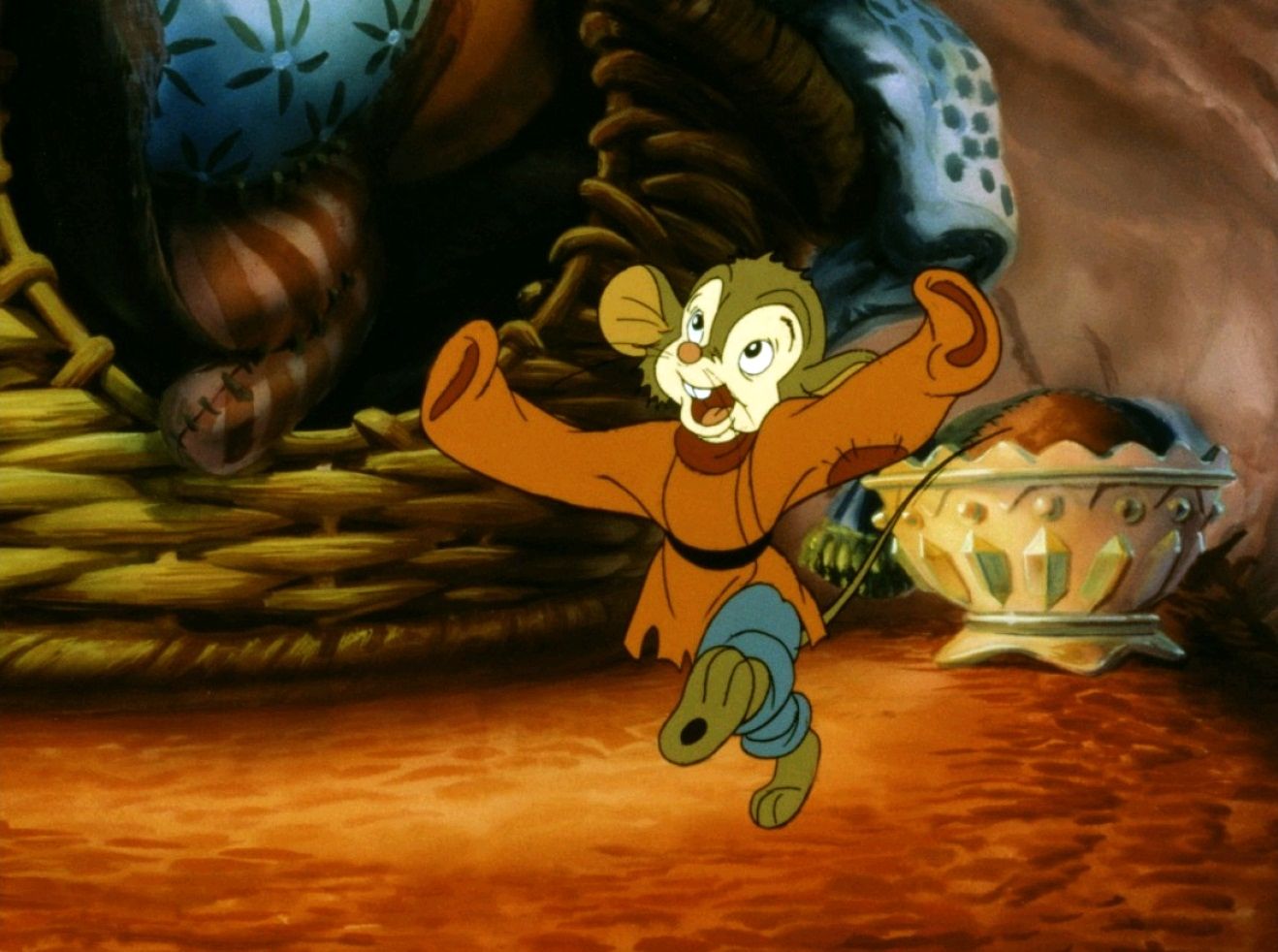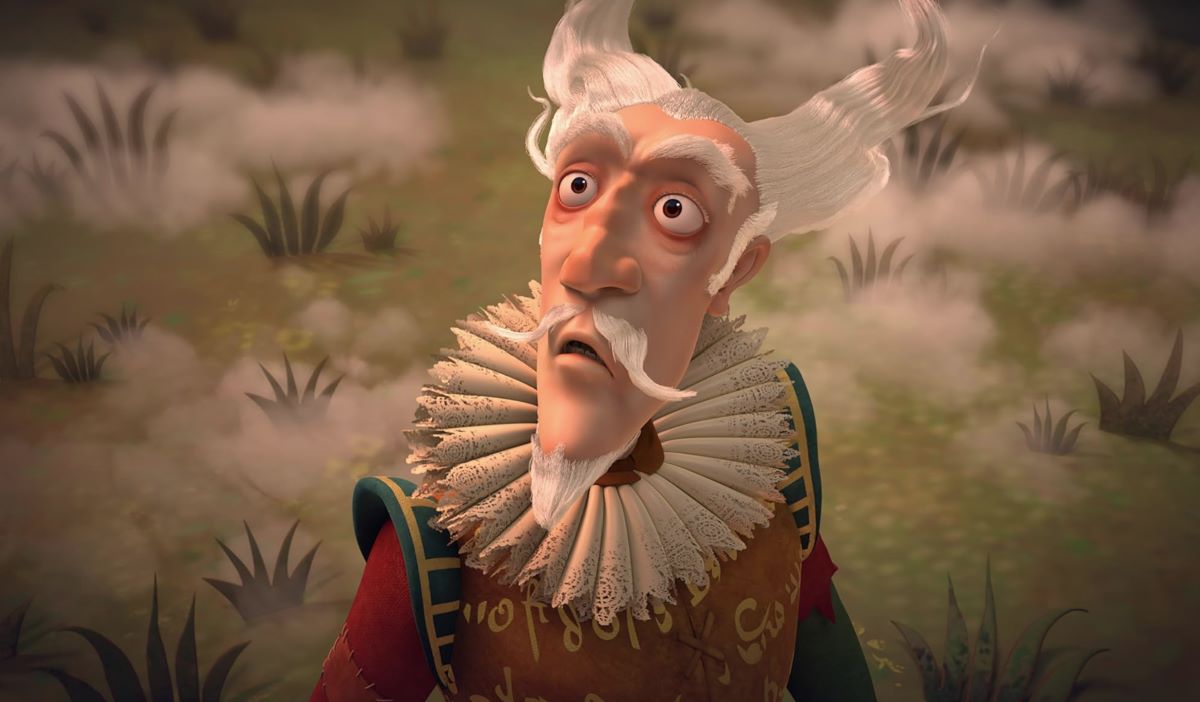An American Tail
Director: Don Bluth
Writers: Judy Freudberg, Tony Geiss
Cast: Dom DeLuise; Phillip Glasser; Madeline Kahn; Nehemiah Persoff; Christopher Plummer; Erica Yohn; Amy Green
Rating: G
Running Time: 1h 20m
* * *
by Rita Kempley
Does it ever strike you as odd that rodents give us the willies, but we’re forever starring them in kiddie cartoons? Perhaps the hairy little cheese-nibblers have been typecast because of Mickey. Whatever the impulse, here comes another mousecartoon, this one from the stupefying Steven Spielberg.
An American Tail, with a family of Russian mice, a gang of rats and a cockroach in a cameo appearance, is the amazing storyteller’s first animated feature. It’s a melting-pot movie for little Americans, full of immigrant dreams and as patriotic as Frosted Flakes. It’s not as grabbing as many of the Disney classics, but it builds on that tradition.
Director Don Bluth and a cadre of other Disney emigres create this classically drawn and effect-filled tale whose characters themselves are refugees. A family of Russian mice flee the Cossacks for the cobblestones of New York — where, as the show-stopping song says, there are no cats and the streets are paved with cheese, oh ho, the streets are paved with cheese.
There’s lots of music, mostly mild-mannered, to sweeten this rather serious story by Sesame Street writers Tony Geiss and Judy Freudberg. Bluth, whose similarly socially conscious The Secret of NIMH was about a widowed mouse and a race of super-intelligent rats, has not come far afield. All the better to understand the mighty motivations of young Fievel, who’s separated from the Mousekewitz family on the voyage to America.
Luckily, Fievel (the voice of seven-year-old Phillip Glasser) washes into New York Harbor safe in a bottle. It’s 1885, and the teeming shores are ethnically diverse, with mice from many lands seeking the American dream. Bluth and company recreate the tenements, the sweat shops, the harbor as it was 100 years ago. Fievel is rescued by the French pigeon Henri (Christopher Plummer), who is overseeing the completion of the Statue of Liberty, the Lady without her face on. Henri takes Fievel under his wing, restores his flagging spirits and sends him on his search for his family.
Fievel, named for Spielberg’s granddad, is also aided by Tiger, a splendid pussycat played by adorable Dom DeLuise; Gussie Mausheimer, a lisping anti-cat activist acted by madcap Madeline Kahn; and Honest John, a shady Tammany Hall boss played by crusty Neil Ross. Papa and Mama Mousekewitz are performed by Nehemiah Persoff and Erica Yohn, who had personal links with their roles, both being offspring of Russian-Jewish parents.
An American Tail — unlike the sobering holocaust comic “Maus” — is a bright-eyed tale of Jewish triumphs that will find a place in many young hearts. It reiterates the happiness of homogeneity, prepares the pups for both brotherhood and the free enterprise system. And it’s as pretty as a cascade of soap bubbles.
The Washington Post, November 21, 1986
* * *
An American Tail is Don Bluth’s second animated theatrical feature – after The Secret of N.I.M.H. (1982) – and the first such children’s film to open with a pogrom and to end with an entire species being forcefully ”relocated.”
The time is 1885, and the place is Czarist Russia. After their clean but humble home is destroyed by marauding, anti-rodent cats, little Fievel Mousekewitz, his sister and their parents immigrate to America where they believe, as they sing more than once, that ”there are no cats and the streets are paved with cheese.”
An American Tail, which opens today at Loew’s Astor Plaza and other theaters, is a story of the immigration experience as seen by 7-year-old Fievel, named, we are told in the publicity material, for the emigre-grandfather of Steven Spielberg, who is one of the film’s executive producers.
En route to the United States, Fievel is washed overboard and makes the rest of the journey in a bottle. Once ashore, he begins his desperate search for his lost family. In the process he meets Henri, a French pigeon working on the still copper-colored Statue of Liberty; a con artist named Warren T. Rat, who’s willing to sell the Brooklyn Bridge at discount; Gussie Mausheimer, a wealthy, do-gooding society mouse; Tony Toponi, a kindhearted street-mouse of Italian extraction, and cats of every description who, with one exception, are even meaner and fatter than the ones back home.
An American Tail has a seriously split personality. As he demonstrated in The Secret of N.I.M.H.‘ Mr. Bluth has rediscovered the beauties to be found in the so-called old-fashioned animation techniques used by Walt Disney in such classics as Snow White and the Seven Dwarfs and Bambi.
An American Tail looks good but the tale itself, as conceived by David Kirschner for the screenplay by Judy Freudberg and Tony Geiss, is witless if well-meaning. It’s mostly bland, though every now and then it rises to express its own brand of kiddie-bigotry. When, at the end, Fievel (now called Philly) and his pals devise a scheme to ship all cats to Hong Kong – in effect, to clean up New York -the trick is so humorlessly executed that one is likely to remember other attempts to force involuntary exile.
This may be to take An American Tail more seriously than was intended. If An American Tail were a funnier, less pious film, such thoughts would never arise. However, this is no exuberant ”Tom and Jerry” contest. It’s a movie that wears its ethnicity on its sleeve and has pretensions of being a sort of Silly Symphony epic.
The film’s brief high points are those featuring the character of Gussie Mausheimer, whose voice is provided by Madeline Kahn repeating the Marlene Dietrich accent she used in Blazing Saddles, and Tiger, New York’s only good cat, a character that seems to be modeled on Bert Lahr’s Cowardly Lion. Dom De Luise, who dubs Tiger’s voice, even sounds like Lahr much of the time.
The New York Times, November 21, 1986





